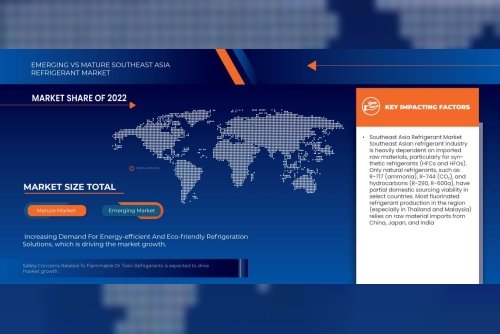The Linux Database Server Manager contains the QuickBooks Desktop Enterprise database server which stores the QuickBooks company files. Users running QuickBooks Desktop Enterprise on a Windows client computer can access the QuickBooks company files to perform QuickBooks Enterprise operations and request data.
This article covers the following topics:
Preparing to Install Components System Requirements Firewall and Antivirus compatibility Configuration Recommendations The Installation Process After Installation Configure the Linux Database Server ManagerThe following information is intended for a system administrator who is familiar with the Linux operating system, understands network operations, and has permissions to properly install and configure the QuickBooks Desktop Enterprise Linux Database Server Manager.
Preparing to Install the Linux Database Server ManagerIt is important to understand the following before installing the QuickBooks Desktop Enterprise Linux Database Server Manager on your Linux Server.
ComponentsThe Linux Database Server Manager consists of the following components:
The Database server files enable QuickBooks Desktop Enterprise users to read and write data from the QuickBooks company files located on the Linux server.The qbmonitord daemon continually monitors the directories that contain the QuickBooks company files to ensure that each directory has a qbdir.dat file. When connected to a Linux server, the QuickBooks client uses the qbdir.dat file to generate a network definition (ND) file for each QuickBooks company file (.qbw and .qba). The ND file enables the QuickBooks client to request data and perform operations on QuickBooks company files. If a qbdir.dat file for a monitored directory is deleted or modified, the qbmonitord daemon creates a new one.The qbmonitord configuration file (qbmonitord.conf) specifies the directories that the qbmonitord daemon monitors. These directories contain the QuickBooks company files. Each time you modify the qbmonitord.conf file, the qbmonitord daemon automatically re-reads the file and immediately monitors the specified directories.System RequirementsHardware and Software Minimum Recommended Processor 1.2 GHz Intel Pentium 32 GHz Intel Pentium 4RAM1 GBAs much as possible Disk Space 2.5 GB Additional space for the QuickBooks company filesLinux Distribution (Operating System - Client and Server)
Linux File Server - Requirements and Performance Directories on Linux servers that contains the QuickBooks company file must be configured as a Samba Share Samba Share can be mapped as a drive on windows client Performance will be impacted on networks running less than 100 Mbps Client computersQuickBooks Desktop Enterprise 19.0
Linux Database Server Manager is supported on the 32-bit and 64-bit versions of the following distributions:
Fedora 27OpenSuse 42.3Red Hat Enterprise 7 (Update 4)QuickBooks Desktop Enterprise 18.0
Linux Database Server Manager is supported on the 32-bit and 64-bit versions of the following distributions:
Fedora 25OpenSuse 42.2Red Hat Enterprise 7 (Update 3)QuickBooks Desktop Enterprise 17.0
QuickBooks Database Server Manager for Linux is supported on the 32-bit and 64-bit versions of the following distributions:
Fedora 23OpenSuse 42.1Red Hat Enterprise 7 (Update 2)Configuration RecommendationsCase-Sensitive File Names - Unlike Windows, the filesystem used on Linux is case-sensitive. Filenames that differ only by case may prevent Desktop Enterprise from working properly. Make sure that your QuickBooks company file names are unique.Sharing and User Permissions - The directory on your Linux server where you store the QuickBooks company files must be configured as a Samba share so that it can be mapped as a drive on your Windows client computers.Important: Samba does not overwrite limits set by kernel-level access control such as file permissions, file system mount options, ACLs, and SELinux policies. Both the kernel and Samba must allow the user to perform an action on a file before that action can occur. Intuit recommends that you do not use anonymous or guest level access.Host Name Resolution - To be able to access the QuickBooks company files, Windows clients must be able to resolve the host name or IP address of the Linux server. Make sure Samba is configured correctly to use the Domain Name Server. If you do not have DNS or WINS configured and do not want to use broadcast resolution, you can list the Linux server in the Windows HOSTS file.Firewall and Antivirus compatibilityIf you use firewall and antivirus products, you might have to adjust settings in these products to ensure the best possible performance with Desktop Enterprise (an incorrectly-configured firewall can stop the Linux Database Server Manager from working).
If you experience performance issues that you think are related to your firewall software, refer to the documentation that came with the firewall software or contact your firewall supplier for assistance.
Important: The Linux Database Server Manager uses the following ports
QuickBooks Desktop Enterprise 19.0: Ports 8019 or 55383 through 55387 QuickBooks Desktop Enterprise 18.0: Ports 8019 or 55378 through 55382 QuickBooks Desktop Enterprise 17.0: Ports 8019 or 55373 through 55377For more information refer to Configure Firewall and Internet security settings for QuickBooks Desktop
Make sure that the appropriate port is open on both the Linux Server and the Windows Client.Note: If you are unable to access company files, check that Port 10172 is open on both the Linux server and the Windows client.












